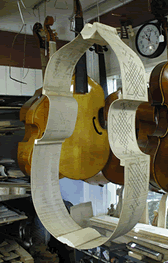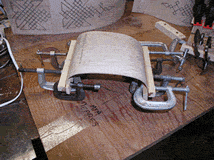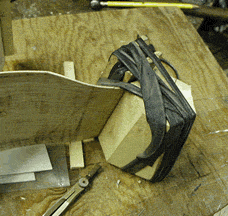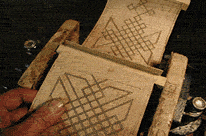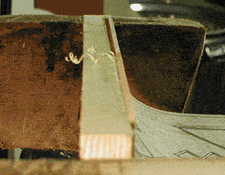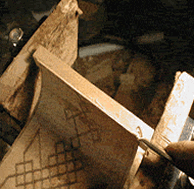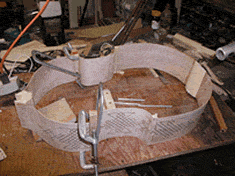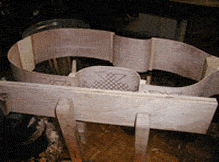How to make a Viola da Gamba.
In 100 easy steps, only ten of which are illustrated and described here.

I've been intending to post a page like this for a few years, and waiting until I had the time to do it right. It's becoming clear to me-- it's never gonna happen. So I'm on to plan B: Don't worry about doing it right, just do what I can, as I can get to it. I'm starting with the bits and pieces that I have photos to illustrate. My intention is to keep adding a bit at a time until I have the whole process, from cutting up a tree to selling an instrument, photographed, described, and posted.
Some folks seem to believe in a RIGHT way to do things. I've got no problem with that. I'd love to know the right way. Unfortunately, the more old instruments I look at, the more people I talk to, the more shops I visit, the more books I read, the more confused I get. There seem to be an awful lot of right ways. I've given up on the idea. If there is a secret, a one true right way, I figure I am not going to find it. I'm left with knowing several ways to skin the cat, so to speak, and a belief that each has it's merits.
A form is often used to assemble the body of an instrument. Some folks favor inside forms, some outside forms. Both have good and legitimate claims to rightness, and both are good ways to work if you want to make a pile of essentially identical instruments. However, if you only want to make a few instruments of a particular style, and if you are not overly concerned about symmetry and consistency, it is possible to skip the inside/outside debate entirely-- in fact, it's possible to skip the form. Just don't do it, as they say. You won't be the first.
